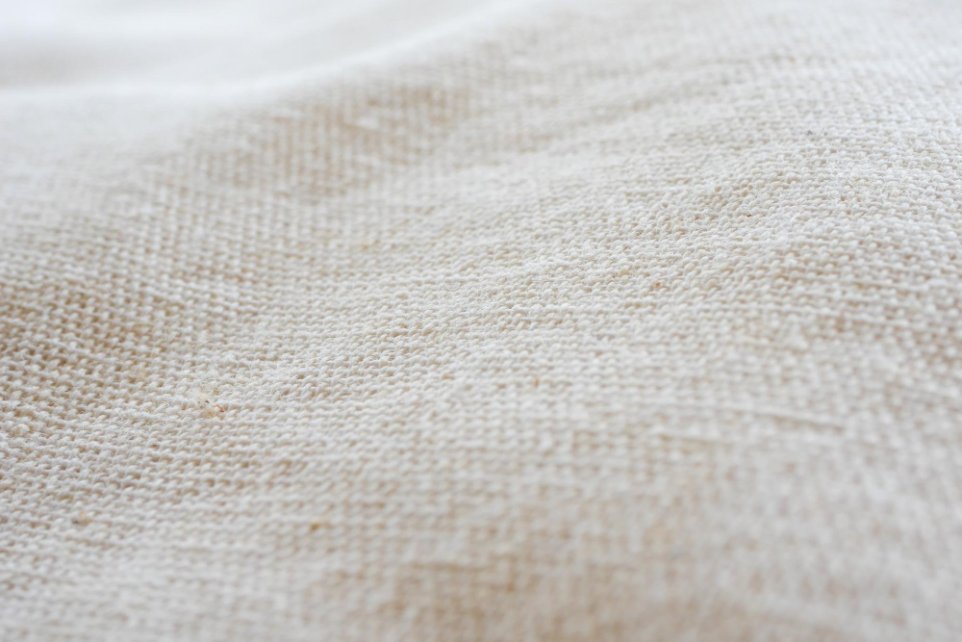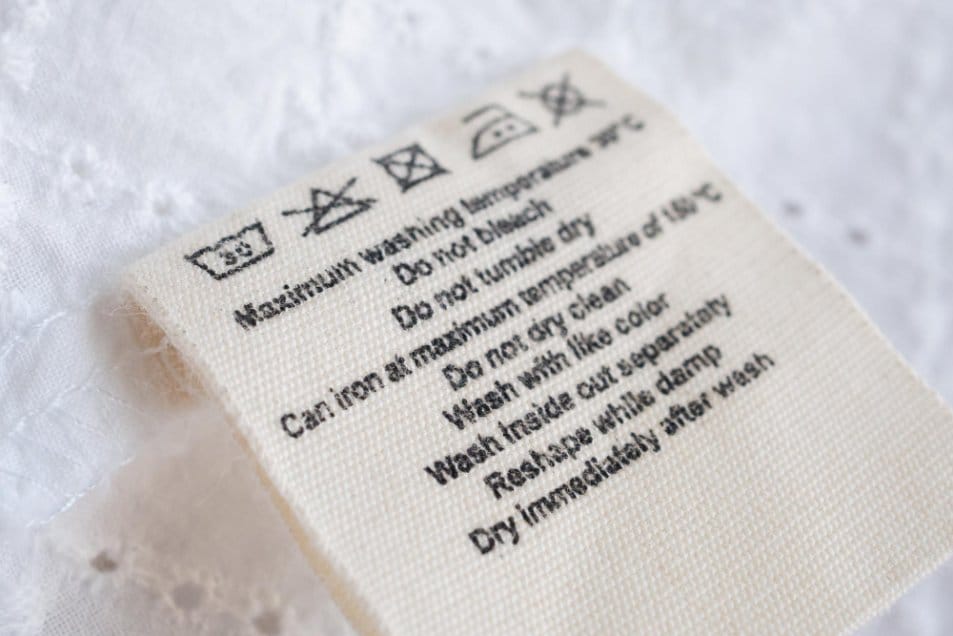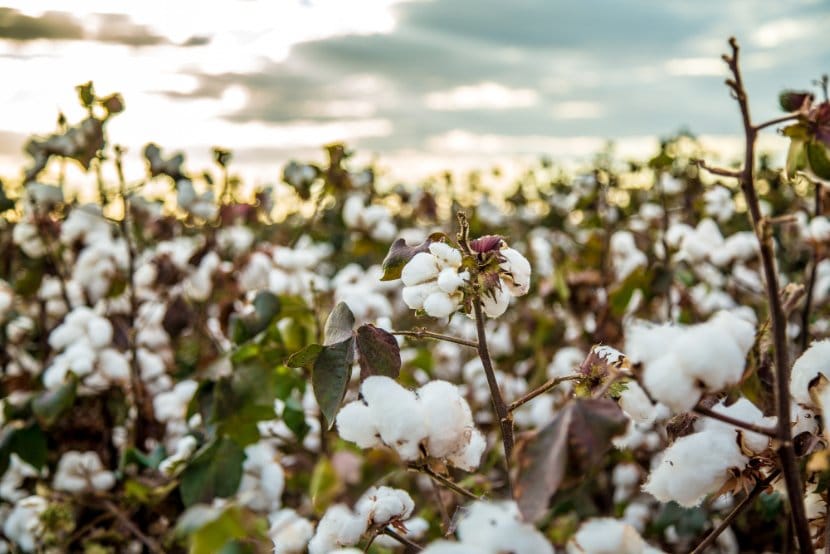Everything you need to know about this versatile, affordable fabric from its historical roots to modern applications
Quick Takeaways
- Calico is an unbleached, plain-weave cotton fabric that originated in 12th-century India
- It shrinks 10% on first wash and up to 3% on subsequent washes
- Available in three main weights: lightweight (80-115 gsm), medium (115-145 gsm), and heavyweight (145-160+ gsm)
- Perfect for toiles, tote bags, quilting, and home décor projects
- Biodegradable and eco-friendly, especially when choosing organic options
- Wash at 30°C maximum and always pre-wash before sewing
What is Calico Cotton Fabric?
Calico is a plain-weave cotton fabric in its raw, unprocessed state. Unlike other cotton textiles, calico remains unbleached and undyed, giving it a natural cream or beige color with visible flecks of cotton seeds throughout the weave. This distinctive appearance comes from minimal processing after the fabric leaves the loom.
The fabric sits in a sweet spot between lighter materials like muslin and heavier options like canvas. This makes it incredibly versatile for everything from fashion prototyping to home décor projects.
What Makes Calico Unique?
The term “loomstate” refers to calico’s unfinished nature. When you buy calico, you’re getting fabric exactly as it came off the weaving machine, with no additional treatments. This raw quality gives calico several defining characteristics:
- Natural color: Cream to light beige with visible seed particles
- Slightly coarse texture: Softer than canvas but rougher than finished cotton
- Plain weave structure: Simple crisscross pattern creating a balanced, durable fabric
- Breathable: The open weave allows air circulation
- Highly absorbent: Perfect for accepting dyes and paints evenly
Is Cotton Calico Fabric Stretchy?
No, calico has no stretch. It’s a woven fabric with no elastic fibers, which means it maintains its shape and doesn’t have the give you’d find in knit fabrics or stretchy materials. This makes it ideal for structured projects but not suitable for fitted garments that require flexibility.
Historical Background and Origins
What Country Are Calicos From?
Calico originated in India, specifically in the city of Kozhikode (formerly called Calicut) in Kerala during the 12th century. Skilled artisans developed the plain weave technique that became the fabric’s signature, and it was traded along ancient spice routes long before European contact.
What Does the Name Calico Mean?
The name “calico” comes directly from Calicut, the anglicized version of Kozhikode. European traders discovered this fabric at the port city and named it after the location. Interestingly, in America, the term evolved to describe printed patterns rather than the fabric itself, which is why Americans often use different terminology for the plain unbleached fabric.
Why Was Calico Banned?
In the 18th century, calico sparked trade wars in England. Cheap calico imports from India became so popular they threatened the established wool industry. British wool producers successfully lobbied for the Calico Acts of 1700 and 1720, which restricted or banned the import and wearing of printed calico fabrics. These laws aimed to protect local textile workers but ultimately failed to stop calico’s popularity. By the 19th century, British manufacturers had developed their own calico printing techniques, and the fabric accounted for nearly half of Britain’s textile printing capacity.
Types and Weights of Calico
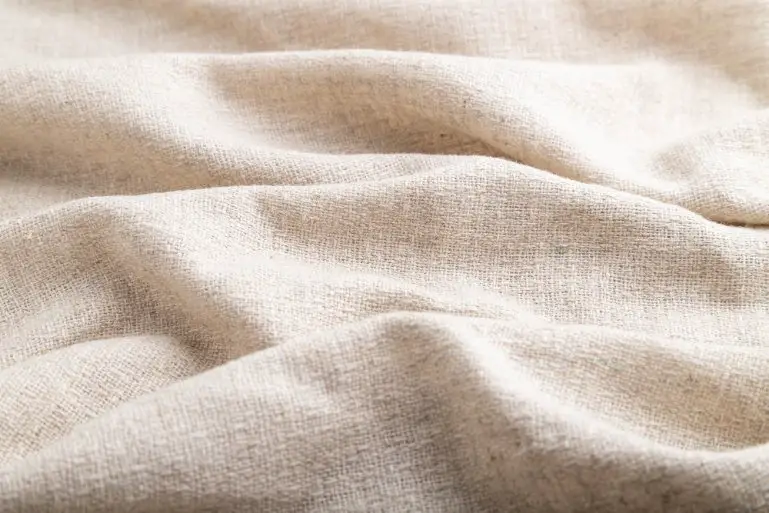
Not all calico is the same. Understanding the different types helps you choose the right fabric for your specific project.
Quality Grades
Standard Calico (Loomstate)
This is raw, untreated fabric straight from the loom. It retains natural sizing and oils, giving it a stiffer feel. Standard calico is the most affordable option and works perfectly for basic projects, practice garments, and situations where you plan to dye or print the fabric yourself. Expect maximum shrinkage with this type.
Premium Calico (Scoured)
Premium calico undergoes a scouring process that removes natural oils and impurities. The result is a softer, cleaner fabric that’s more pleasant to work with. It still maintains the natural color but feels smoother against the skin. Premium calico shrinks less than standard varieties and is better suited for garments that will touch skin directly.
Organic Calico
Made from organically grown cotton without pesticides or harmful chemicals, organic calico appeals to eco-conscious crafters. It costs more than conventional calico but offers peace of mind for baby items, bedding, and projects where chemical exposure is a concern. Look for certifications like GOTS (Global Organic Textile Standard) or OEKO-TEX to ensure your calico is truly organic. Organic cotton production also has a significantly lower environmental impact.
Fire-Retardant Calico
Treated with chemicals like Proban to resist flames, this specialty calico is essential for theatre backdrops, stage props, event decorations, and commercial upholstery. It costs more but meets safety standards required for public spaces. The treatment is durable and withstands multiple washes.
Weight Classifications
Calico comes in three main weight categories, measured in grams per square meter (gsm):
| Weight Category | GSM Range | Characteristics | Best Uses |
|---|---|---|---|
| Lightweight | 80-115 gsm | Thin, breathable, drapes well | Summer clothing, linings, crafts, light curtains |
| Medium Weight | 115-145 gsm | Versatile, balanced sturdiness | Toiles, bags, quilting, home décor, general sewing |
| Heavyweight | 145-160+ gsm | Thick, very durable, structured | Upholstery, heavy-duty bags, canvas alternatives |
Medium weight calico is the most popular choice because it balances durability with workability. If you’re unsure which weight to choose, start with medium weight for general projects.
Versatile Uses and Applications
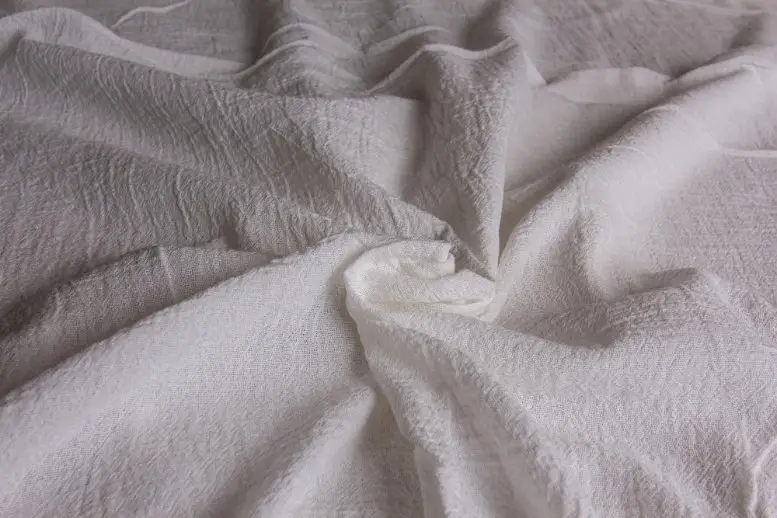
Calico’s adaptability makes it useful across multiple industries and creative pursuits.
Fashion and Garment Making
In the fashion industry, calico serves as the go-to fabric for toiles (also called muslins in America). These are test garments that designers create to check fit and silhouette before cutting into expensive fabrics. The process saves money and allows for adjustments without wasting premium materials.
Calico also works for actual garments, particularly summer dresses, loose shirts, and casual wear. The breathable nature keeps you cool in warm weather. However, keep in mind that unbleached calico can feel rough initially and softens with repeated washing.
Home Décor and Furnishings
The neutral tone of calico blends easily with any interior design style. Common home applications include:
- Curtains and drapes
- Cushion covers and pillow cases
- Table runners and napkins
- Upholstery backing
- Lampshades
You can leave calico in its natural state for a rustic look or dye it to match your color scheme.
Quilting and Crafts
Quilters appreciate calico for its tight weave and uniform texture. It works well for quilt backings, practice blocks, and patchwork projects. The fabric’s ability to absorb dye evenly makes it popular for tie-dye and fabric painting projects.
Crafters use calico for countless projects: reusable shopping bags, aprons, doll making, embroidery bases, and more. Its low cost means you can experiment freely without worrying about wasting expensive materials.
Practical and Industrial Uses
Beyond creative projects, calico has practical applications:
- Food packaging: The breathable fabric keeps grains, coffee, and produce fresh while reducing plastic waste
- Theatre and events: Backdrops, stage props, and event decorations
- Art canvas: Stretched over frames for painting
- Dust covers: Protecting furniture and stored items
Can Calico Be Used for Curtains?
Yes, calico makes excellent curtains, especially for informal spaces or when you want a natural, unfinished look. The fabric provides privacy while allowing some light to filter through. For best results, use heavyweight calico and add a lining if you need more light blocking. Just remember to account for shrinkage when calculating your fabric needs.
Benefits and Drawbacks

Why Is Calico a Good Material?
Calico offers several compelling advantages that explain its enduring popularity:
Cost-Effectiveness
Is calico a cheap fabric? Yes, and that’s one of its biggest selling points. You can typically find quality calico for $3-7 per yard, making it one of the most affordable cotton fabrics available. This low price point means you can buy plenty for large projects or experimentation without breaking the bank.
Why Is Calico So Cheap?
Calico costs less because it skips expensive processing steps. The fabric goes straight from loom to sale without bleaching, dyeing, or finishing treatments. This minimal processing reduces manufacturing costs, and those savings get passed to you. The trade-off is a rougher texture and natural color, but for many projects, these characteristics are actually desirable.
Durability and Strength
Don’t mistake “cheap” for “weak.” The tight plain weave gives calico impressive strength. It resists tearing and can handle regular washing and heavy use. This makes it ideal for items like reusable shopping bags that need to hold weight repeatedly.
Excellent Dye Absorption
The unprocessed fibers absorb dyes and paints beautifully, resulting in vibrant, long-lasting colors. This quality makes calico a favorite for custom printing and dyeing projects.
Environmental Benefits
Is calico a sustainable fabric? Yes, especially compared to synthetic alternatives. Calico is 100% biodegradable and decomposes naturally. Organic varieties offer even better sustainability credentials. The minimal processing also means less water and energy consumption during manufacturing.
What Are the Disadvantages of Calico Fabric?
While calico has many strengths, it’s not perfect for every situation:
Rough Texture
Fresh calico feels coarse and stiff, especially in loomstate form. This roughness can be uncomfortable against sensitive skin. The fabric does soften with washing, but it takes several cycles to achieve a truly soft feel. If you need immediately soft fabric, consider pre-washed premium calico or choose a different material altogether.
Significant Shrinkage
Does calico cotton shrink? Absolutely, and substantially. This is perhaps the biggest challenge when working with calico. We’ll cover shrinkage in detail in the care section, but know that you must account for size changes in your planning.
Wrinkles Easily
Natural cotton wrinkles, and calico is no exception. Unlike synthetic fabrics with wrinkle resistance, calico needs regular ironing if you want a crisp appearance. The fabric also wrinkles during storage, so plan to press it before starting projects.
Not Water-Resistant
Is calico fabric waterproof? No, standard calico is not waterproof or even water-resistant. It’s absorbent, which makes it great for dyeing but problematic for items exposed to moisture. Special waterproof calico with PVC backing exists, but regular calico will soak through quickly.
Visible Imperfections
The natural, unprocessed state means you’ll see seed particles, slight color variations, and occasional slubs (thick spots) in the weave. These characteristics add rustic charm for some projects but may not suit formal applications.
Calico vs Similar Fabrics
Is Calico Like Muslin?
Calico and muslin are cousins but have distinct differences. Both are plain-weave cotton fabrics used for similar purposes, but muslin is finer and lighter. Think of muslin as the delicate version and calico as the sturdier option.
What Is the Difference Between Cotton Calico and Muslin?
| Feature | Calico | Muslin | Canvas | Denim |
|---|---|---|---|---|
| Weight | Medium (115-145 gsm typical) | Very light (60-100 gsm) | Heavy (200+ gsm) | Very heavy (300+ gsm) |
| Texture | Slightly coarse | Soft and smooth | Very coarse | Thick and rigid |
| Typical Price | $3-7/yard | $3-6/yard | $8-15/yard | $10-20+/yard |
| Processing | Unbleached, minimal | Often bleached | Minimal to moderate | Heavily processed |
| Best For | Toiles, bags, general crafts | Draping, baby items, linings | Upholstery, outdoor items | Durable garments, jeans |
| Durability | Good | Moderate | Excellent | Excellent |
Is Canvas the Same as Calico?
No, canvas is much heavier and coarser than calico. While both are plain-weave cotton fabrics, canvas uses thicker yarns and a tighter weave, making it suitable for heavy-duty applications like tents, bags, and upholstery. Calico sits between muslin and canvas in terms of weight and sturdiness.
Is Calico the Same as Quilting Cotton?
Not quite. Quilting cotton refers to finished, printed cotton fabrics specifically designed for quilting. These fabrics are bleached, dyed, and often have patterns printed on them. Calico can be used for quilting, but it’s the raw, unfinished version. Many quilters use calico for backings or practice pieces but choose finished quilting cottons for the visible parts of their quilts.
Complete Care and Washing Guide

Can You Wash Calico Fabric?
Yes, you can and should wash calico. In fact, washing is essential for most projects because it removes sizing, softens the fabric, and allows shrinkage to occur before you cut your pattern.
Understanding Shrinkage
Does Calico Shrink When Washed?
Calico experiences significant shrinkage, especially on the first wash. Here’s what to expect:
- First wash: 8-10% shrinkage in length and width
- Subsequent washes: 2-3% additional shrinkage
- After 3-4 washes: Shrinkage stabilizes
This means a yard of fabric (36 inches) could shrink to about 32-33 inches after the first wash. Always buy extra fabric to account for this shrinkage.
Should You Wash Calico Before Sewing?
Absolutely yes. Pre-washing is non-negotiable unless you’re making something that will never be washed. Skipping this step means your finished project will shrink and distort after the first wash, potentially ruining hours of work.
How to Pre-Wash Calico: Step-by-Step
- Prepare the fabric: Unfold your calico and check for any loose threads. You can serge or zigzag stitch the raw edges to prevent excessive fraying during washing, though this is optional.
- Machine wash: Place the fabric in your washing machine on a gentle cycle. Use cool or lukewarm water (30°C/86°F maximum). Add a small amount of mild detergent.
- Skip the spin cycle: If possible, reduce the spin speed or skip it entirely. High-speed spinning can cause uneven shrinkage and create stubborn wrinkles.
- Air dry or low heat: Remove the fabric while still slightly damp. Hang it to air dry or tumble dry on the lowest heat setting. Never use high heat.
- Iron while damp: When the fabric is still slightly damp, press it with a hot iron. This removes wrinkles more easily than ironing completely dry fabric.
- Repeat if needed: For maximum shrinkage control, wash the fabric 2-3 times before cutting. This ensures all shrinkage occurs before you start your project.
How to Wash Calico Cotton
Once you’ve completed your project, follow these care instructions to keep your calico items looking their best:
Washing Temperature
Always wash calico in cool to lukewarm water, never exceeding 30°C (86°F). Hot water causes excessive shrinkage and can weaken the fibers over time.
Detergent Selection
Use a mild, gentle detergent without bleach. Harsh chemicals can damage the natural cotton fibers and cause yellowing. For organic calico, choose plant-based detergents to maintain the fabric’s eco-friendly credentials.
Washing Machine Settings
- Select gentle or delicate cycle
- Use cool water temperature
- Reduce spin speed to minimize wrinkles
- Separate colors if you’ve dyed your calico
Can Calico Go in the Dryer?
You can tumble dry calico, but use caution. High heat causes additional shrinkage and sets wrinkles permanently. If you must use a dryer, select the lowest heat setting and remove items while still slightly damp. Air drying is always the safest option for maintaining size and preventing excessive wrinkling.
Does Calico Wash Well?
Yes, calico handles washing well once it’s been pre-shrunk. The durable plain weave holds up to repeated laundering without pilling or wearing thin. However, expect the fabric to soften gradually with each wash. This is actually a benefit for items that initially feel too stiff.
How to Soften Calico Fabric
If your calico feels too rough, try these softening methods:
- Multiple washes: The simplest method is patience. Wash the fabric 3-5 times, and it will naturally soften as the fibers relax.
- Fabric softener: Add a small amount during the rinse cycle. However, this can reduce absorbency, so avoid it if you plan to dye the fabric.
- Vinegar rinse: Add half a cup of white vinegar to the rinse cycle. This natural softener won’t coat the fibers like commercial softeners.
- Beating method: After washing and drying, beat the fabric gently with a wooden spoon or similar tool. This breaks down stiff fibers.
Ironing and Pressing
Calico needs regular ironing to look neat. Use these tips for best results:
- Iron while the fabric is still slightly damp for easier wrinkle removal
- Use a hot iron setting (cotton setting)
- Press on the wrong side to protect any prints or dyes
- Use steam for stubborn wrinkles
- Store flat or rolled to prevent wrinkles from reforming
Sustainability and Environmental Impact
Is Calico Fabric Organic?
Standard calico is not automatically organic. While all calico is natural (100% cotton), organic calico specifically comes from cotton grown without synthetic pesticides, herbicides, or GMO seeds. You’ll need to look for certifications like GOTS (Global Organic Textile Standard) or OEKO-TEX to ensure your calico is truly organic.
Environmental Benefits
Calico offers several sustainability advantages over synthetic fabrics:
Biodegradability
Calico decomposes naturally within 1-5 months in composting conditions. Organic calico breaks down even faster. Compare this to polyester, which can take 200+ years to decompose, and the environmental benefit becomes clear.
Minimal Processing
The unbleached, undyed nature of calico means fewer chemicals enter waterways during production. Dyeing and finishing processes account for significant water pollution in textile manufacturing, so skipping these steps reduces environmental impact.
Recyclability
Is cotton calico recyclable? Yes, 100% cotton calico is fully recyclable. Old calico items can be shredded and respun into new yarn, turned into insulation material, or composted. Many textile recycling programs accept clean cotton fabrics.
Reduced Carbon Footprint
Natural fibers like cotton require less energy to produce than synthetic alternatives like polyester, which is derived from petroleum. Choosing calico over synthetics reduces your carbon footprint, especially when selecting organic varieties.
Considerations for Conventional Cotton
While calico is more sustainable than synthetics, conventional cotton production does have environmental concerns:
- High water usage during cultivation
- Pesticide and herbicide use on non-organic cotton
- Soil degradation from intensive farming
If sustainability is your primary concern, invest in organic cotton calico. Yes, it costs more upfront, but the environmental and health benefits justify the price difference.
Buying Guide

Is Calico Material Expensive?
No, calico ranks among the most affordable fabrics available. Here’s what you can expect to pay:
- Standard calico: $3-5 per yard
- Premium/scoured calico: $5-8 per yard
- Organic calico: $8-12 per yard
- Fire-retardant calico: $10-15 per yard
For comparison, quality quilting cotton typically costs $10-15 per yard, and specialty fabrics like silk can run $20-50+ per yard. Calico’s low price makes it perfect for beginners learning to sew or anyone working on a tight budget.
How Expensive Is a Calico?
The total cost depends on your project size. A simple tote bag might need 1-2 yards ($3-10 total), while curtains for a large window could require 10+ yards ($30-50). Always buy 15-20% extra fabric to account for shrinkage, mistakes, and pattern matching.
What to Look For When Buying
Weight Selection
Match the fabric weight to your project:
- Lightweight for summer clothing and linings
- Medium weight for toiles, bags, and general crafts
- Heavyweight for upholstery and durable goods
Quality Indicators
Look for these signs of quality calico:
- Even, consistent weave with no large gaps
- Minimal slubs (thick spots in the yarn)
- Natural cream color without yellowing
- Fabric that feels substantial, not flimsy
Width Considerations
Calico typically comes in these widths:
- 45 inches (standard)
- 60 inches (wide)
- 90-120 inches (extra-wide, usually for upholstery)
Wider fabric costs more per yard but can be more economical for large projects because you need less length.
Where to Buy
You can find calico at:
- Local fabric stores
- Online fabric retailers
- Craft supply stores
- Wholesale fabric suppliers (for bulk orders)
Consider ordering fabric samples before committing to large purchases, especially when buying online. Most retailers offer samples for a few dollars, letting you feel the weight and texture before ordering.
Project Ideas and Tutorials
Is Calico Easy to Sew?
Yes, calico is beginner-friendly. The medium weight is easy to control under a sewing machine, and the tight weave doesn’t fray excessively. The fabric doesn’t stretch, which makes it more predictable than knits. If you’re just learning to sew, calico provides an excellent practice material before moving to expensive fabrics.
Watch this comprehensive fabric masterclass on working with calico, covering sewing techniques, toile making, and practical project ideas.
Beginner Project: Simple Tote Bag
A basic tote bag makes an ideal first calico project. You’ll need:
- 1 yard of medium-weight calico
- Matching thread
- Basic sewing supplies
This project teaches straight seams, reinforcement stitching, and finishing techniques. Plus, you’ll end up with a practical reusable bag. Check our beginner sewing projects guide for detailed instructions.
Intermediate Project: Toile for Dress Fitting
Once you’re comfortable with basic sewing, try making a toile. Choose a dress pattern you want to make in nicer fabric. Cut and sew it in calico first, trying it on to check the fit. Mark adjustments directly on the calico, then transfer those changes to your pattern. This process saves you from ruining expensive fabric.
Advanced Project: Custom Dyed Curtains
For experienced sewers, creating custom curtains combines multiple skills:
- Calculate fabric needs: Measure your windows and add 15% for shrinkage plus hem allowances.
- Pre-wash thoroughly: Wash 2-3 times to complete all shrinkage before dyeing.
- Dye the fabric: Follow fabric dye instructions for your chosen color. Calico accepts dye beautifully and evenly.
- Cut and sew: Create your curtains following standard curtain construction methods.
- Add finishing touches: Consider lining for light blocking or leave unlined for a casual look.
Frequently Asked Questions
In the UK and many other countries, it’s simply called calico. Americans often call the unbleached version “muslin” (though this causes confusion because muslin typically refers to a much lighter fabric elsewhere). Other terms include “loomstate cotton,” “unbleached cotton,” “greige fabric,” or “natural cotton.”
In America, the term “calico” typically refers to printed cotton fabric with small, colorful patterns rather than the plain unbleached fabric. Americans often call plain, unbleached calico “muslin” when using it for toiles and test garments, even though this differs from international usage where muslin describes a much finer, lighter fabric.
Keepsake Calico is a brand name used by some fabric retailers, particularly in Australia and the US. Most keepsake calico products are 100% cotton, but always check the label to confirm. The term generally refers to printed quilting-weight cotton rather than unbleached calico.
Several fabrics share similarities with calico: Muslin (lighter and finer), canvas (heavier and coarser), unbleached cotton drill (similar weight but twill weave), and cotton duck (heavier plain weave). The closest alternative is probably medium-weight muslin or lightweight canvas, depending on whether you want something lighter or heavier.
Yes, calico is a cellulose fabric. Cotton fibers are made primarily of cellulose, a natural polymer found in plant cell walls. This cellulose structure gives cotton its absorbency, breathability, and biodegradability.
Calico’s special qualities include its raw, unprocessed nature that showcases cotton in its most natural state. The visible seed flecks and natural color give it authentic character. Its versatility spans from practical test garments to finished products. The low cost makes it accessible for experimentation. Plus, its excellent dye absorption creates a perfect canvas for custom coloring and printing.
Traditional calico is 100% cotton with no synthetic fibers. However, some manufacturers produce cotton-blend calico (often labeled as “calico gold”) that includes 15-20% polyester. These blends reduce wrinkling and increase durability but lose some of the natural breathability. Always check the fabric content label when purchasing.
Conclusion
Calico proves that simplicity can be powerful. This unassuming fabric, with its natural color and slightly rough texture, has served creators and makers for over 800 years. From its origins in 12th-century India to modern sewing rooms worldwide, calico continues earning its place as a textile staple.
Key Recommendations
Based on everything we’ve covered, here are your action steps for working with calico successfully:
For Beginners
- Start with medium-weight calico for your first projects
- Always pre-wash at least twice before cutting your pattern
- Buy 20% more fabric than your pattern calls for to account for shrinkage
- Practice basic sewing techniques on calico scraps
- Use calico to make toiles before cutting into expensive fabrics
For Experienced Sewers
- Keep a stash of pre-washed calico in multiple weights for spontaneous projects
- Experiment with natural dyeing techniques on calico
- Use heavyweight calico for durable household items
- Consider organic calico for baby items and bedding
- Master strong seam techniques for long-lasting calico projects
For Eco-Conscious Crafters
- Choose organic, certified calico whenever possible
- Save calico scraps for smaller projects or composting
- Support suppliers using sustainable production methods
- Make reusable alternatives to single-use items (bags, napkins, food wraps)
- Learn more about natural fabric benefits
Final Thoughts
The beauty of calico lies in its honesty. It doesn’t pretend to be something it’s not. The rough texture, natural color, and visible imperfections remind us that this fabric comes from a plant, grown in fields and processed minimally. In a world of synthetic alternatives and heavily processed textiles, calico offers a return to basics.
Whether you’re making your first tote bag, creating a practice garment, or designing custom home décor, calico provides a reliable foundation. Its affordability removes the fear of mistakes, encouraging you to experiment and learn. Its durability ensures your finished projects last through years of use. And its environmental credentials let you create with a clear conscience.
Remember the three golden rules of working with calico: always pre-wash, never use hot water, and buy extra for shrinkage. Follow these guidelines, and you’ll avoid the most common frustrations that trip up calico newcomers.
As you explore different fabric types in your creative journey, calico will likely become a trusted staple in your supplies. Its versatility means you’ll find new uses for it constantly. That roll of cream-colored, slightly coarse fabric holds potential for countless projects.
So grab some calico, fire up your sewing machine, and start creating. Don’t worry about perfection on your first try. That’s the whole point of calico. It’s affordable enough to make mistakes, durable enough to handle learning, and versatile enough to grow with your skills. Happy sewing!

